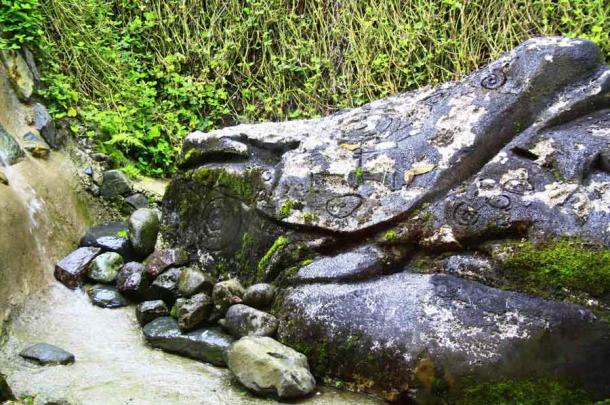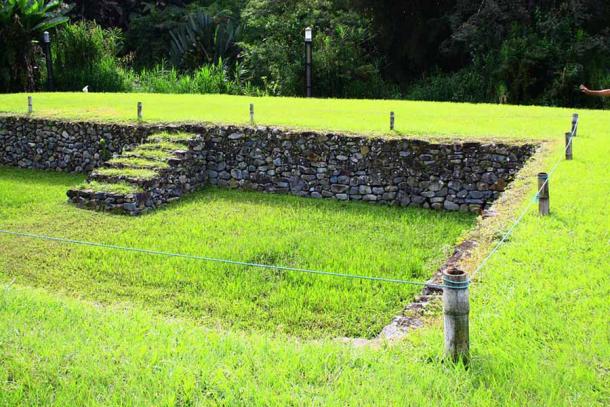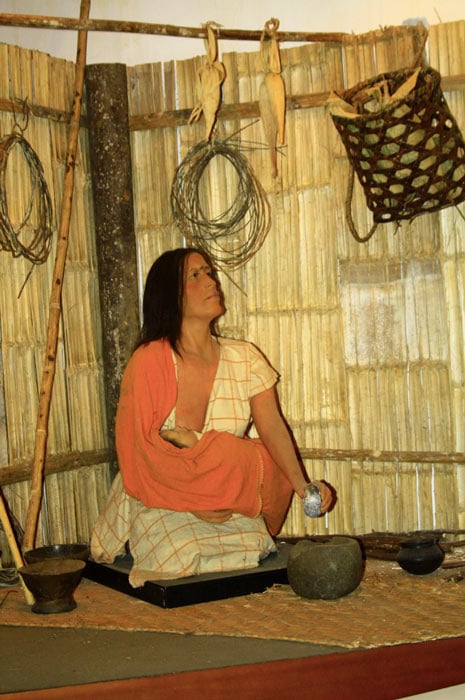The Yumbo of Ecuador first came to their Sacred Valley of Tulipe in around 800 BC. They were at that time peace-loving farmers. But what they left behind showed that, with their skills as merchants and traders, they were capable of far more.
There is very little evidence about the history and origins of Yumbo before they arrived in their sacred valley on the west slope of Ecuadorian Andes, in the heart of the cloud forest. Some scientists believe that they originated from Valdivia’s coastal tribes. But once they had arrived, they created a long-lasting culture that spread across the slopes of the Pichincha volcano .
A Long-Lasting Culture
The Yumbo did not take long to start trading with neighboring tribes and had soon developed a wide trade network. In this way they were able to cement relationships through the region, and also built roads to help with communication and trade.
Their value as merchants allowed them to negotiate their way through several incursions, most notable from the Inca in the year 1520, and Spanish Conquest a decade later. Where others would seek to defend themselves, the Yumbo sought a peaceful relationship with the aggressors
Many visitors to Ecuador will overlook the Yumbo in favor of the Inca as the country’s principal indigenous culture. But this is incorrect, as the Inca were invaders from the south who occupied a territory rich with its own overlapping cultures.
These cultures, including the Yumbo, were less developed than the Inca politically, and could not match their engineering or skill in stonework, or indeed their military might. But these pre-Inca tribes had a massive role to play in building the history of Ecuador.
Forest Healers and Pyramid Builders
The Tulipe valley, where the Yumbo lived for more than 2,000 years from 800 BC, is rich in archaeology today. Much of what survives allows researchers to build a picture of these peaceful farmers and traders.
The Yumbo do not seem to have been united by any single political agenda or language. They were strongly aware of the existence of other tribes or groups, and the benefits of trading with these peoples. Their recognition of mutual advancement through beneficial trade rather than conquest shows a remarkable level of sophistication in their thinking.

Yumbo geoglyphs at Tulipe (Carolina Zuluaga / CC BY-NC 2.0 )
The Yumbo had developed an understanding of the natural medicine from the plants around them, and they took this knowledge to the surrounding tribes. Due to this, and the rugged and inaccessible lands the Yumbo lived in, they also gained a reputation as witches or sorcerers.
Over time, they managed to expand from northwestern rain forests and the clouds of Quito to the coastline. And this expansion was only possible because the Yumbo tribe made complex roads connecting their system of truncated pyramids, named Tolas.
These pyramids were primarily residences for the highest status members of Yumbo society. Most of these artificial pyramids had many secondary purposes as well, acting as a shelter from flood in the rainy season or serving as lookout points for observing the surrounding land.
The Inca Arrive
As a result of this expansionist trade and roadbuilding, the Yumbo managed to unite the highland, Amazon, and northern coast regions of Ecuador. With the help of their road networks, carved out from the floor of the jungle and kept hidden amidst the dense vegetation they had built a trade confederation from the Andes to the Pacific.
When the Inca arrived they found a ready-made trading hub ready to be annexed into their empire, and a population ready to trade with these strangers from the mountains to the south. This transition was made smoother by the Yumbo knowledge of the Andean language of Quechua Spoken by the Inca.

Yumbo pools atop a pyramid terrace (Carolina Zuluaga / CC BY-NC 2.0 )
The Yumbo offered trade route access to support the growing Inca presence in Quito, and continued to operate the same trading network they had done before, benefitting both cultures. Hence, for a few short years the Yumbo and Inca interwove themselves, before the arrival of the Spanish.
The Spanish Conquest
The region fell before the Spanish conquest alongside the rest of the Inca empire. The arriving European colonists marked the usefulness of maintaining the commerce lines that had been already developed by the Quito and Yumbo tribes. The Yumbo set to work supporting their new masters in the city with fresh vegetables and fruits, and soon became popular in Europe for their woven goods.
But this conquest was different, and these new masters would turn out to be deadly for the Yumbo. Just like any other South American tribe, the Yumbo were undefended against the smallpox and other diseases brought over by the Spanish.
The population, who had chosen peace and co-operation, were heavily decimated in the first couple of decades after European colonization, alongside the rest of South America. The eruption of the Pichincha volcano 130 years later 1660 buried what was left of the Yumbo culture.
Gone Forever?
This volcano, leaving behind a thick ash layer over Tulipe and the surrounding area, ended the story of the peace-loving traders with their knowledge of healing, and the industrious roadbuilders who connected the mountains and the ocean.
Or did it? Persistent rumor from the oral record and other fragments of evidence suggest that the Yumbo were not wiped out and that they chose to relocate from their sacred valley in Tulipe. Did they move to the Amazon basin beyond the mountains?

Reconstruction of a Yumbo domestic scene (Carolina Zuluaga / CC BY-NC 2.0 )
Do they survive, hidden in the jungle slopes? It is certainly possible, and we may yet find some of the culture of the Yumbo in the forests of Ecuador to this day.
Top Image: Are the Yumbo lost forever? Source: Ammit / Adobe Stock.
By Bipin Dimri
Related posts:
Views: 0
 RSS Feed
RSS Feed

















 November 21st, 2021
November 21st, 2021  Awake Goy
Awake Goy  Posted in
Posted in  Tags:
Tags: 
















